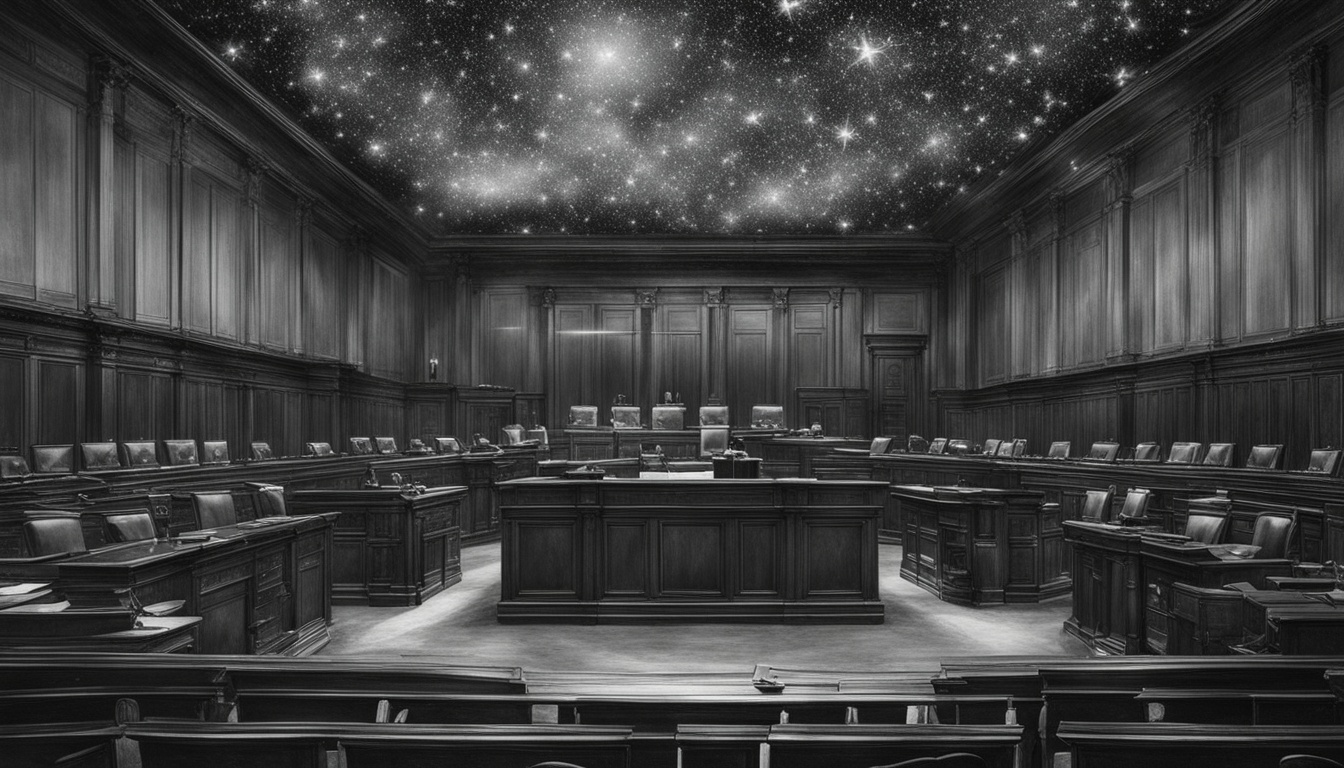Understanding the nuances of defamation law and its applications in modern communication is crucial. In high-profile defamation cases, such as Johnny Depp's successful lawsuit against Amber Heard, the significant financial and reputational consequences of slander and libel have been brought to the forefront. Notable cases like Depp v. Heard and Cardi B v. Latasha Kebe underscore the importance of responsible communication in the public sphere. These cases highlight the significance of defamation laws in protecting reputations and emphasize the need for public figures to prove actual malice. As the legal landscape continues to evolve, gaining insight into the complex and evolving world of defamation becomes increasingly important. There's more to uncover about this intricate area of law.
Key Takeaways
• High-profile defamation cases, such as Depp v. Heard and Cardi B v. Latasha Kebe, demonstrate the significant financial consequences of defamation lawsuits.
• Public figures must prove actual malice in defamation cases, making it more challenging to win lawsuits.
• Defamation law distinguishes between libel (written statements) and slander (spoken statements), each with different legal implications.
• The evolution of defamation law is adapting to new communication mediums, requiring a nuanced understanding of the ever-changing legal landscape.
• False statements can have lasting and damaging consequences for one's reputation, highlighting the importance of responsible communication.
Notable Defamation Cases in History
Throughout history, numerous high-profile defamation cases have made headlines, shaping the legal landscape and setting precedents for future lawsuits.
One such landmark case is New York Times Co. v. Sullivan, which established the standard for proving defamation against public figures in 1964. This ruling has had a lasting impact on defamation law, influencing subsequent cases.
More recently, the Depp v. Heard case resulted in a $10 million settlement for Johnny Depp against Amber Heard over defamation claims stemming from a Washington Post op-ed. This case highlights the significance of responsible communication, especially for public figures.
These notable cases demonstrate the importance of defamation laws in protecting individuals' reputations and promoting accountability in public discourse. By examining these high-profile cases, we can gain a deeper understanding of the complexities of defamation law and its ongoing evolution.
Famous Figures in Defamation Law

Beyond the landmark cases that have shaped defamation law, several famous figures have made headlines with their own high-profile defamation battles, highlighting the significant consequences of false statements on one's reputation.
Public figures like Johnny Depp, Cardi B, and Dominion Voting Systems have all faced high-profile defamation cases that underscore the importance of proving actual malice in defamation law.
Depp, for instance, won over $10 million in damages in his defamation case against Amber Heard over her Washington Post article. Similarly, Cardi B successfully sued Latasha Kebe (Tasha K) for false claims, winning $4 million in damages. Dominion Voting Systems settled with Fox News for over $787 million in their defamation case, avoiding a trial.
These cases demonstrate the significant impact of false statements on one's reputation and the importance of protecting one's reputation through defamation law.
High-Profile Defamation Trials

Several high-profile defamation trials have made headlines in recent years, showcasing the significant consequences of false statements on one's reputation. These cases highlight the impact of defamation on public figures, underscoring the importance of responsible speech.
In one notable case, Johnny Depp won over $10 million in damages in his defamation lawsuit against Amber Heard over her Washington Post article. Similarly, Cardi B was awarded $4 million in damages in her defamation lawsuit against Latasha Kebe for false claims on YouTube. Dominion Voting Systems also settled with Fox News for over $787 million in their defamation case regarding voting machines. These cases demonstrate the significant financial damages that can result from defamation lawsuits.
The New York Times Co. v. Sullivan case in 1964 set the standard for proving defamation for public figures, making it clear that false statements can have lasting consequences. These high-profile trials serve as a reminder of the importance of responsible speech and the potential consequences of defamation.
Defamation Law in the Spotlight

As defamation law takes center stage in high-profile cases, its complexities and nuances are being scrutinized, revealing the delicate balance between free speech and reputation protection.
The law distinguishes between libel and slander, with public figures facing an important burden of proof to win defamation cases. Public figures must prove actual malice, meaning the defendant made defamatory statements with reckless disregard for the truth. This standard is vital in high-profile cases, where the impact of false statements on reputation is a key focus.
Defamation lawsuits can have significant financial consequences for both plaintiffs and defendants. The evolution of defamation law is also critical, as it adapts to address new communication mediums like social media and online platforms.
As the spotlight shines on defamation law, its intricacies are laid bare, highlighting the need for a nuanced understanding of this complex and ever-changing legal landscape.
Infamous Slander Cases in America

In recent years, a slew of high-profile defamation cases have made headlines, engaging the nation's attention and sparking important conversations about the delicate balance between free speech and reputation protection.
These cases have brought to the forefront the devastating impact of false statements on one's reputation, particularly for public figures. The courts have played a pivotal role in determining the boundaries of free speech and the limits of defamation.
Some notable examples of infamous slander cases in America include:
- Johnny Depp's defamation case against Amber Heard, resulting in a $10 million damages award.
- Cardi B's defamation lawsuit against Latasha Kebe, where she was awarded $4 million in damages.
- Dominion Voting Systems' settlement with Fox News for over $787 million regarding false statements about voting machines.
These high-profile cases underscore the significance of proving actual malice in defamation lawsuits, especially when involving public figures. As the courts continue to navigate the complexities of defamation law, one thing is clear: false statements can have lasting and damaging consequences for one's reputation.
Frequently Asked Questions
What Is the Biggest Defamation Case?
The biggest defamation case in recent years involves Dominion Voting Systems suing Fox News for false statements about voting machines.
The lawsuit settled for over $787 million, avoiding a trial.
This case stands out for its massive settlement amount, highlighting the significant consequences of spreading false information.
How Much Is a Slander Lawsuit Worth?
A slander lawsuit's worth can vary greatly, with awards ranging from $1 million to over $10 million. Factors influencing the value include the severity of false statements, impact on the plaintiff's reputation, and punitive damages.
Evidence of harm to reputation, emotional distress, and financial losses contribute to the award amount.
What Proof Do You Need for Slander?
To prove slander, one needs to provide evidence that a false and defamatory spoken statement was made about them. This can be supported by witness testimony, recordings, or documentation.
The statement must have been communicated to a third party, not just between the parties involved. Additionally, proof of harm caused by the statement, such as damage to reputation or financial losses, is essential in building a strong case.
What Must a Public Figure Prove for a Person to Sue for Defamation?
A public figure must prove actual malice to successfully sue for defamation. This involves demonstrating that the false statement was made with knowledge of its falsity or reckless disregard for the truth. By doing so, they can show that the defendant intentionally attempted to harm their reputation.
Meeting this high standard of proof is necessary due to the public figure's voluntary exposure to public scrutiny.
Conclusion
As the spotlight shines on high-profile defamation cases, the truth becomes clearer: words have consequences. Like a beacon in the darkness, defamation law illuminates the importance of responsible speech.
From historic trials to modern-day lawsuits, the message is loud and clear: slander has a price. As the scales of justice balance truth and falsehood, the public is reminded that freedom of speech isn't a license to defame.
In the end, the truth will out, and those who wield words as weapons will be held accountable.











